Toyota's Prius Chief Engineer Reveals The Future Of The Automobile. Part Two: What Will We Drive In 10 Years?

Yesterday, we met Toyota Chief Engineer Satoshi Ogiso in his office in Toyota City. He is responsible for all new technology at Toyota. Yesterday, we talked mostly about the past. Now, we talk about the future.
When I ask Ogiso what car we will be driving in the future, he whips out a chart. It’s a chart which I call “Peak Oil 2.0.”
It’s not that oil wells will suddenly go dry. Level headed people expect oil to flow unabated well into the future. The problem is vehicle growth. In the saturated established markets, vehicle growth is expected to be largely stagnant. It’s the exponential growth in emerging markets that will open a gap between oil supply and oil demand – if all those cars run on petroleum-based fuel. That gap is what keeps Satoshi Ogiso awake at night – and he usually sleeps only 5 hours anyway.
There are many versions of this chart. The one used by Toyota says that we have been living with a small gap since 2005. Experts generally agree that the gap will become a serious problem in the 2015-2020 time-frame. In the world of an auto engineer, 2015 is today. With a lead time to 3 to 5 years, auto manufacturers around the world better have their act together now and answers to how that gap will be filled.
Satoshi Ogiso has the answer, and many will not want to hear it:
“To control this gap, we must go multi track. We must improve gasoline and diesel engines. We must increase the number of hybrid models. We must produce the plug-in hybrid. We must develop city commuter electric vehicles. We already started small production of fuel cell vehicles. We must do all these improvements at the same time.”
This translates into huge R&D costs which will be beyond the capabilities of many carmakers. The first victims of Peak Oil 2.0 will be small carmakers who cannot keep up with the expense of a multitrack research program at breakneck speed with only small returns in the foreseeable future.
How will this gap be filled? Ogiso puts another chart on the table. Mind you, this is not how all of future fuel will be divvied up. This is only how the 15 or so extra million barrels of oil will be made up for when the gap has opened its hungry mouth by 2030.
According to Ogiso and his team of experts, compressed Natural Gas or CNG will grow in importance. Ogiso sees a “big future in CNG.” Liquid fuels will be with us long into the future. Gasoline will be around for a long time. Increasing amounts of these liquid fuels will not be made from oil.
All of these fuels will drive some kind of internal combustion engine, either directly mounted to the transmission, or in hybrid fashion.
The pressure to improve efficiency, combined with the maturing technology will push the equilibrium more and more in the direction of the hybrid. Asked what kind of a car I will own in 2020, Ogiso says:
“In 2020, hybrid will be mainstream. If you can have two cars, then by 2020, you will likely have one tiny city commuter car that is pure electric. Your regular car will be a hybrid.
The pure hybrid will be the majority, next volume down will be the plug-in hybrid. Plug-ins can use pure electricity without people worrying about the range. Eventually, city commuter EVs will become popular. And of course, the conventional car will still remain on the market – especially in the developing countries, but even in Japan.”
Efficiency improvements of traditional gasoline engines may soon hit a wall, Ogiso figures. He gives the gasoline engine an improvement potential of “maybe 10 to 20 percent.” For modern diesel engines, he sees very little room for improvement.
Listening to Ogiso and looking at his charts, it quickly becomes evident that he does not believe in the wholesale electrification of the automobile anytime soon. When he says “EV”, he always adds “city commuter” to it. This is a small niche market, especially when city commuters are supposed to commute via public transport. It is also interesting to note that on his chart, electricity does not play a serious role until 2020. Even then, the electricity may not come out of a battery. It may come out of a gas tank. Filled with hydrogen.
Yes, hydrogen.
For Ogiso, a hydrogen-powered car is like an EV, but without the weight, slow charge time and range anxiety of the battery. He sees a range of 700 km (434 miles) for a hydrogen-powered car that can be refueled in minutes.
But isn’t hydrogen fraught with technological problems? Ogiso does not think so:
“Toyota’s views are a little different. We continued the development of fuel cells. Sure, there were a lot of problems, especially with cold conditions drivability. But at this moment, we have almost cleared all technical issues.”
But aren’t hydrogen atoms so small that they escape any vessel in no time? Isn’t hydrogen so corrosive that it will eat tanks for breakfast? Ogiso looks at me as if I am from Mars.
“No, I don’t think so. We already have 150 hydrogen fuel cell units in the field in Japan, in the U.S. and in Europe, for more than one year, without serious problems. We have not had a car where the gas had escaped in the morning.”
Actually, the only real problem Ogiso is facing with hydrogen fuel cell vehicles is money:
“For us, the only remaining real issue that stands in the way of fuel cell electric vehicles is mass production cost.”
In a way, Toyota is with fuel cells where they were with hybrids in 1995: Big, bulky, heavy and expensive. Just much more expensive than hybrids.
Toyota is working hard on shrinking the size and the cost of the fuel cell stack. Expensive materials such as platinum have been replaced with cheaper ones. Last year, a commercial hydrogen-powered Toyota would have cost $100,000 . A few days ago, Toyota’s EU VP for planning, Alain Uyttenhoven said it could be €100,000.
When I ask Ogiso how much that car would cost in 2015, he squirms and says that there are estimates, but those are not for public consumption.
When I ask him whether a hydrogen powered car would be an affordable option by 2020, then his worried look morphs into all smiles, and he says with conviction.
“Yes. This is my job.”
Now, you ask, and I ask as well: Where will all that energy come from? Another chart lands on the table. I call it the Tokyo Subway Map of New Energy.
This chart shows gasoline and diesel at a clear disadvantage: Both come from only one source, from oil wells. Biofuel is similarly hampered. Electricity and oddly enough hydrogen can be made from a multitude of sources. That is all fine and good. But what about the infrastructure? Ogiso is not concerned:
“I am not worried about the infrastructure. There is a lot of hydrogen available. Once we have cost effective hydrogen cars, the infrastructure will follow.”
What also will follow is Part 3 tomorrow, in which Satoshi Ogiso will spring a surprise on you, and where he will demonstrate that bringing down weight, bulk, and cost of new energy vehicles is no longer a thing of the distant future.

Bertel Schmitt comes back to journalism after taking a 35 year break in advertising and marketing. He ran and owned advertising agencies in Duesseldorf, Germany, and New York City. Volkswagen A.G. was Bertel's most important corporate account. Schmitt's advertising and marketing career touched many corners of the industry with a special focus on automotive products and services. Since 2004, he lives in Japan and China with his wife <a href="http://www.tomokoandbertel.com"> Tomoko </a>. Bertel Schmitt is a founding board member of the <a href="http://www.offshoresuperseries.com"> Offshore Super Series </a>, an American offshore powerboat racing organization. He is co-owner of the racing team Typhoon.
More by Bertel Schmitt
Latest Car Reviews
Read moreLatest Product Reviews
Read moreRecent Comments
- Lou_BC Let me see. Humans are fallible. They can be very greedy. Politicians sell to the highest bidder. What could go wrong?
- SPPPP Vibrant color 9 times out of 10 for me. There may be a few shapes that look just right in metallic gray, for example. There are a few nices ones out there. And I like VW "White Silver". But I'd usually prefer a deep red or a vibrant metallic green. Or a bright blue.
- 28-Cars-Later Say it ain't so, so reboot #6* isn't going to change anything?[list=1][*]V4-6-8 and High "Tech" 4100.[/*][*]Front wheel drive sooooo modern.[/*][*]NOrthSTARt.[/*][*]Catera wooooo.[/*][*]ATS all the things.[/*][*]We're *are* your daddy's Tesla. [/*][/list=1]
- MaintenanceCosts Can I have the hybrid powertrains and packaging of the RAV4 Hybrid or Prime with the interior materials, design, and build quality of the Mazda?
- ToolGuy I have 2 podcasts to listen to before commenting, stop rushing my homework.




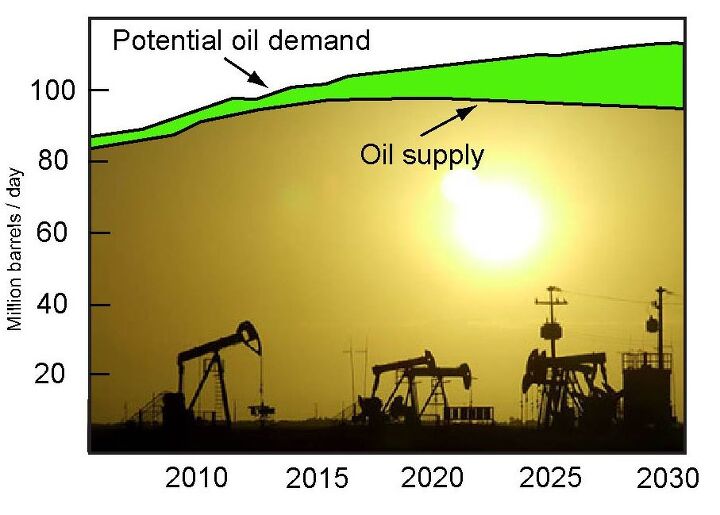

















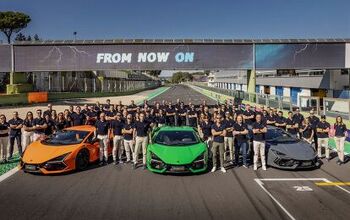
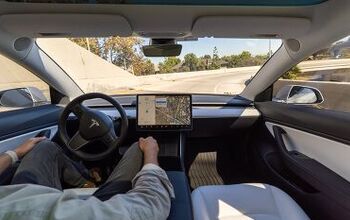

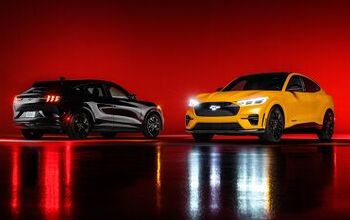
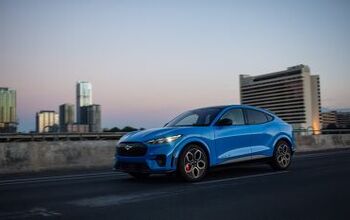
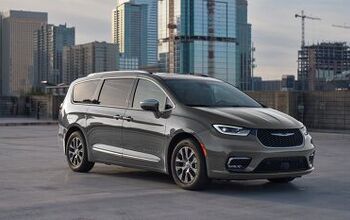

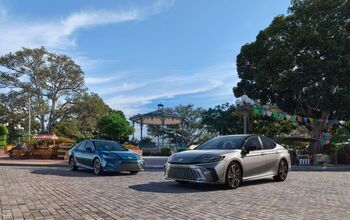


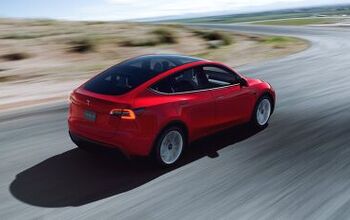


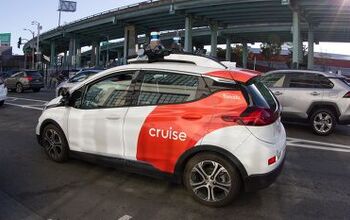

Comments
Join the conversation
At the prices these companies are charging, they're lucky to be selling cars at all. They have to rethink their pricing if they ever want to sell cars with alternative propulsion technology.
To Redav and others.. The hydrogen problems you mentioned may ultimately not be insurmountable: a) Hydrogen is available from sea water and is in fact the most abundant element on our planet; b) It can be obtained by hydrolysis to provide oxygen as well (e.g, for hospitals); c) Hydrolysis stations can be operated by wind power or solar power; d) Internal combustion of H2 has already been worked out by BMW with their H2/7-series; e) It burns cleanly with no CO2 pollution and emits only water vapor as an exhaust product; f) It's equivalent "octane rating" is about 120; g) It's weight is low, allowing an overall lower weight for a car (unlike heavy batteries). The neat thing about burning H2 is that the expense of fuel cells, batteries, and much complexity is avoided. However, problems with H2 IC-combustion vehicles are: a) H2 does have low density, meaning that range may be limited to 200-250 miles tops; b) Dispensing infrastructure in America has yet to be built; c) Because of the Hindenberg incident, there is still a "Hydrogen fear"; d) Storage could be in liquid or compressed gas forms; but if LH2 is used, the required venting may complicate driving through tunnels and vehicle storage in unvented enclosed buildings. Just some thoughts...... But I honestly don't believe we have seen the end of Hydrogen IC motor vehicles yet.